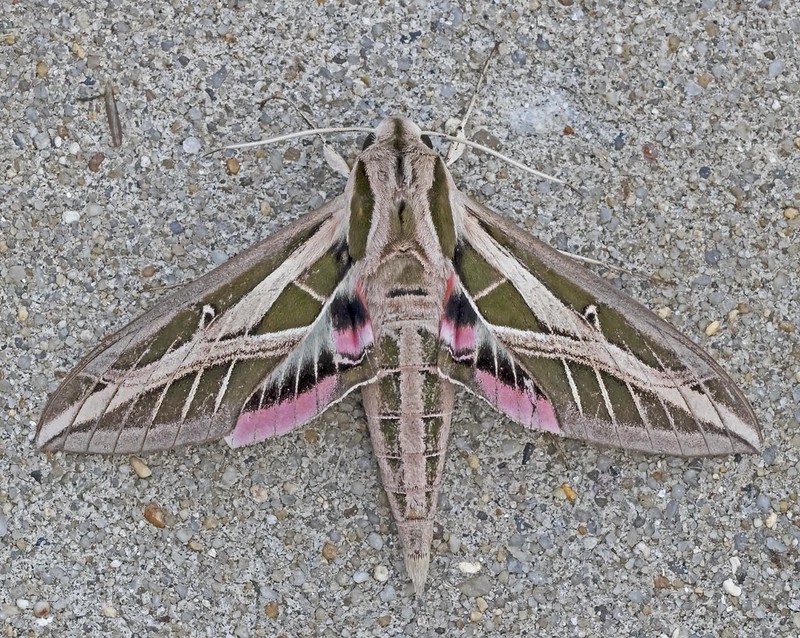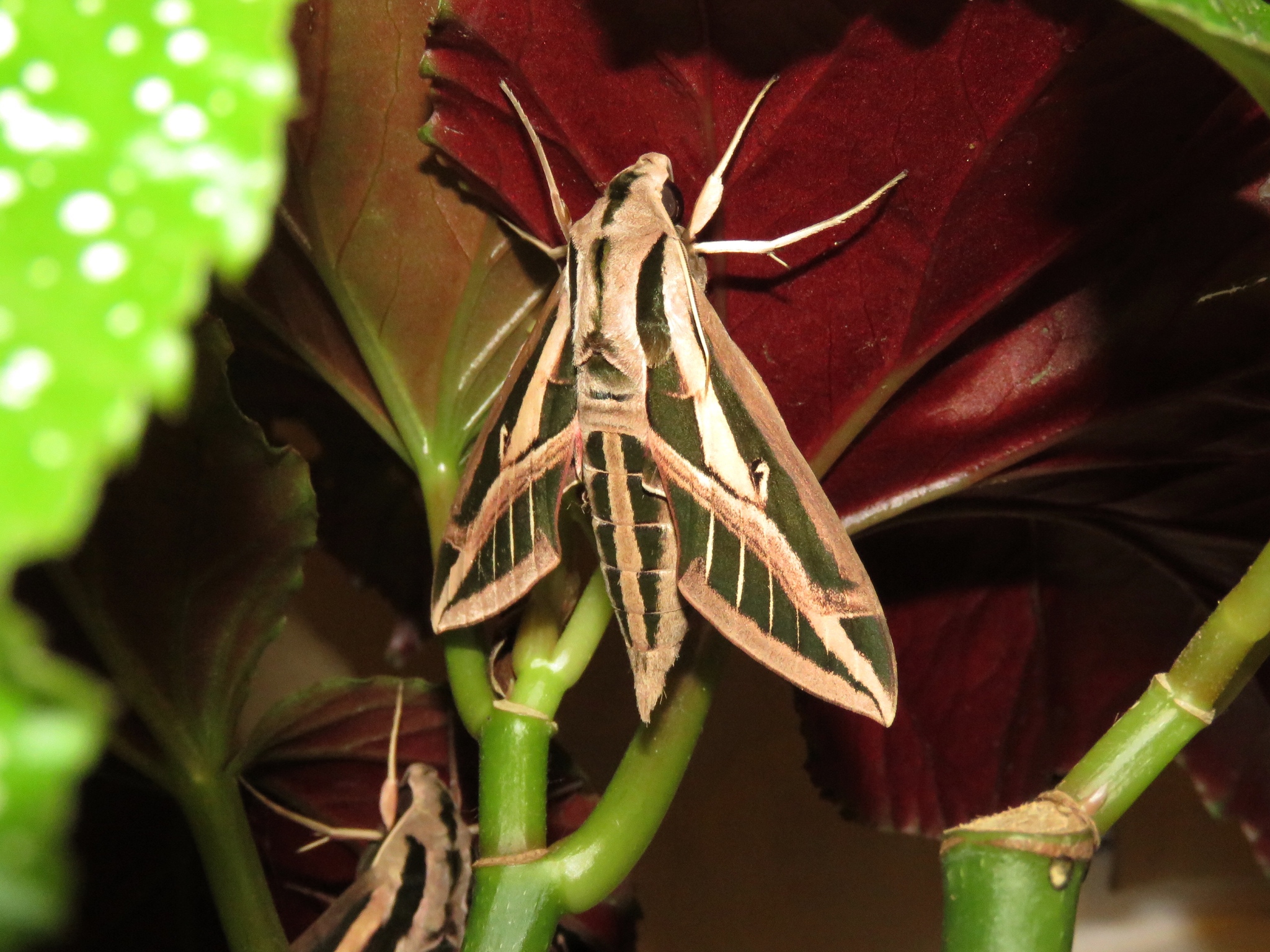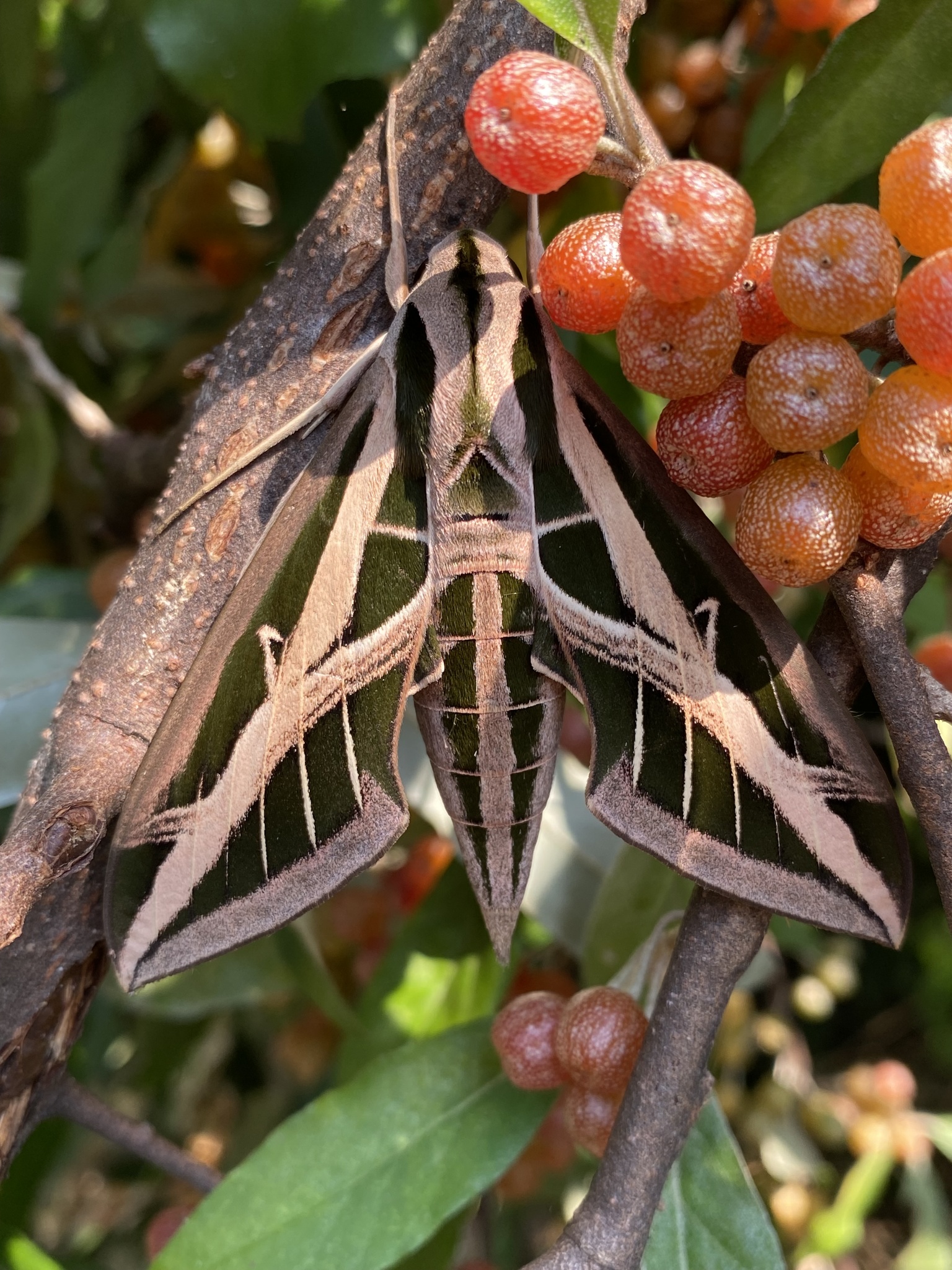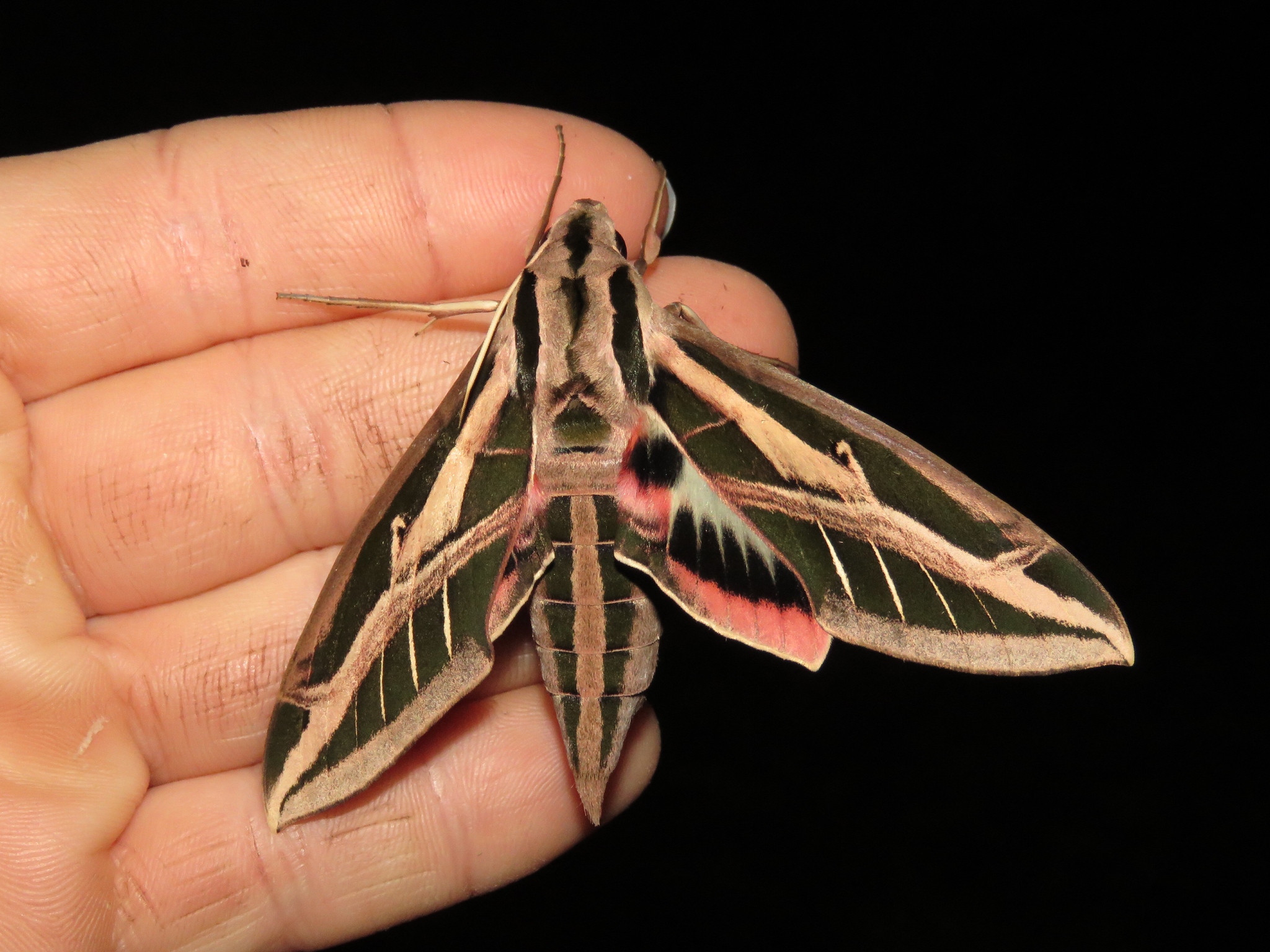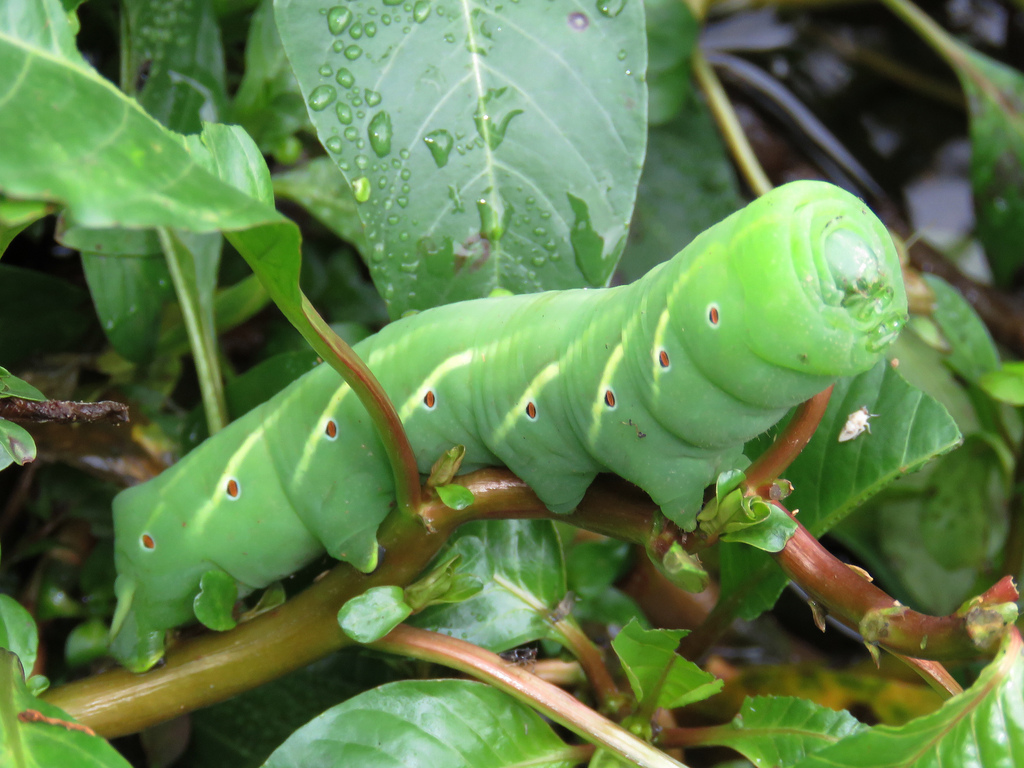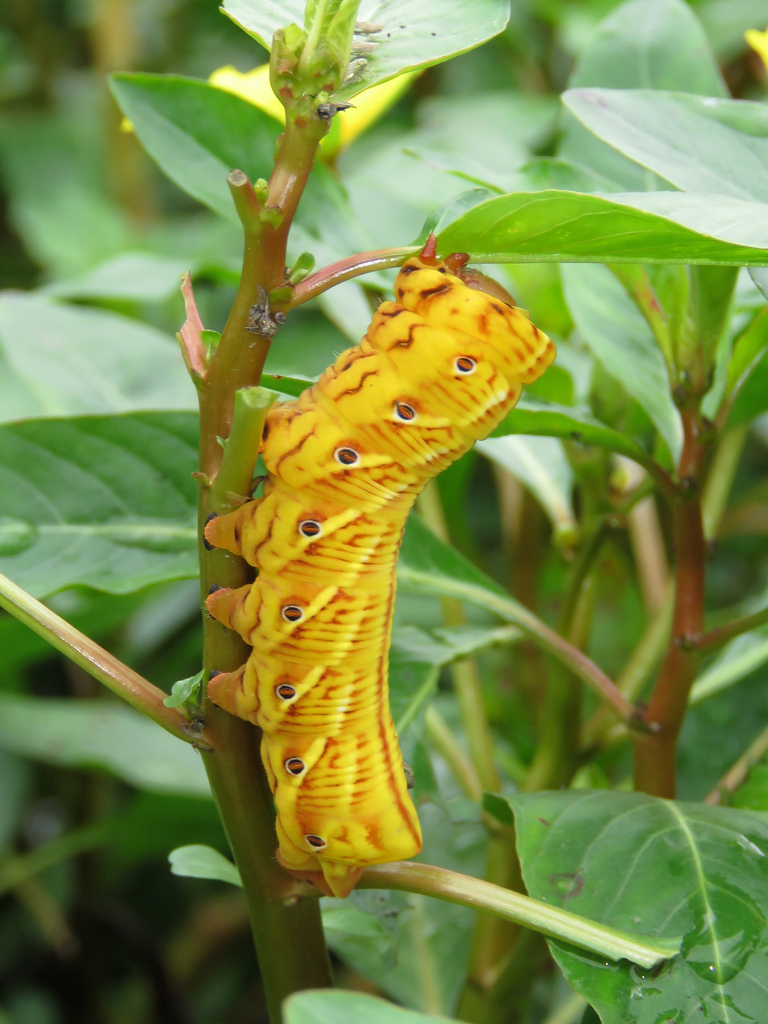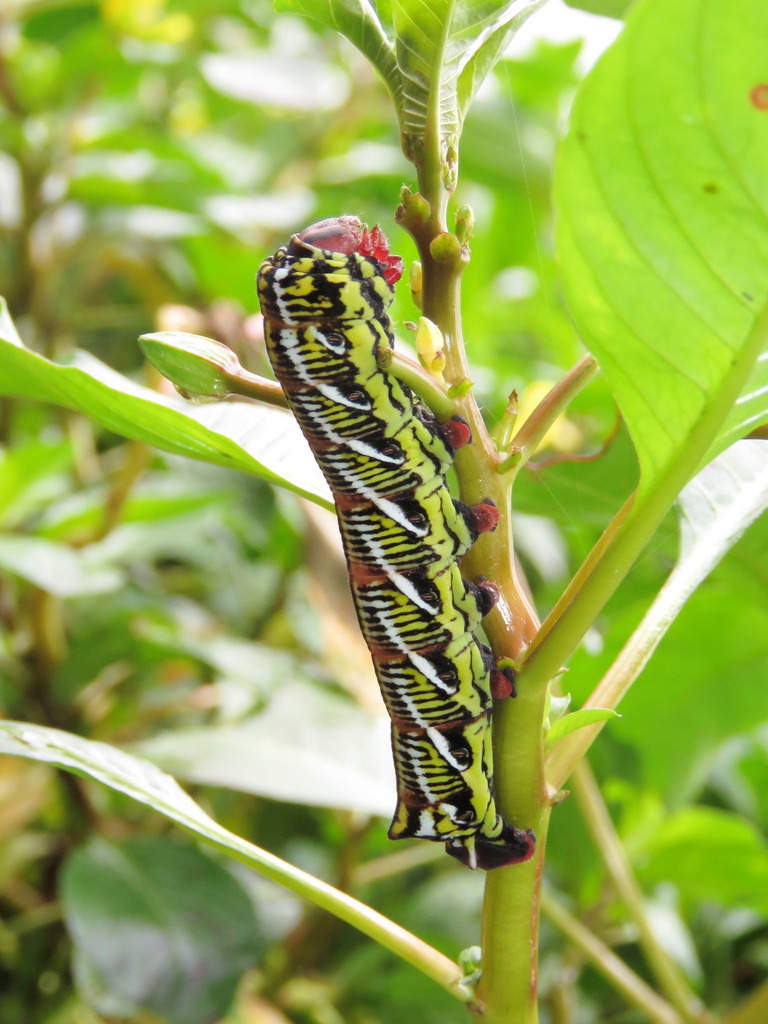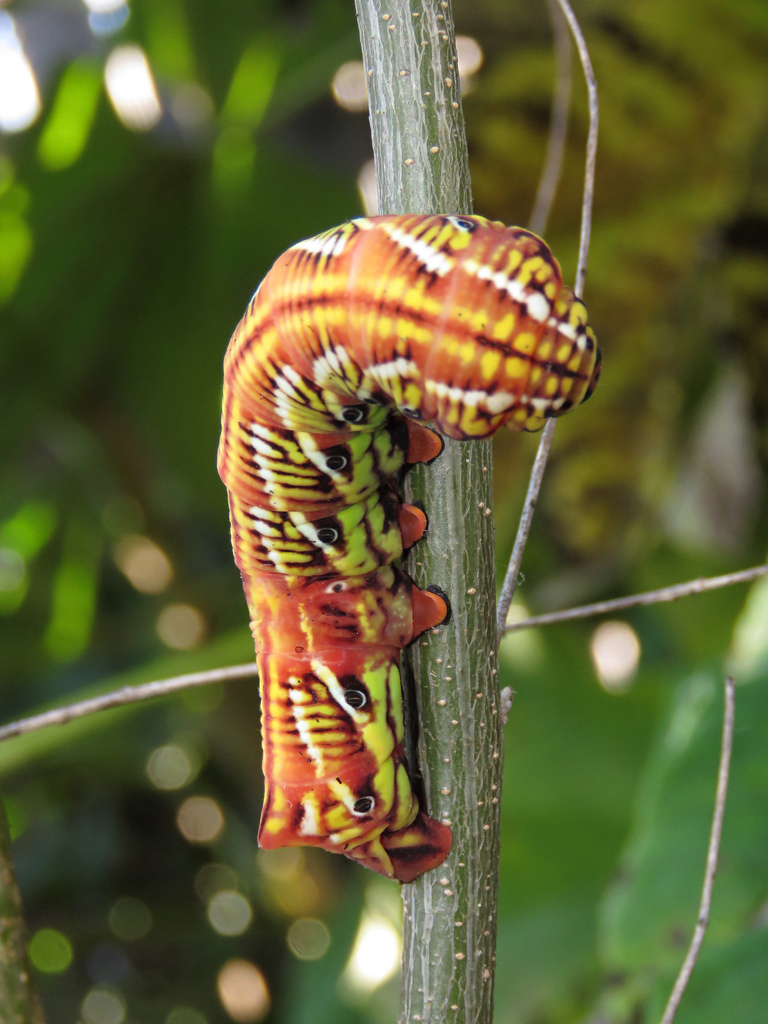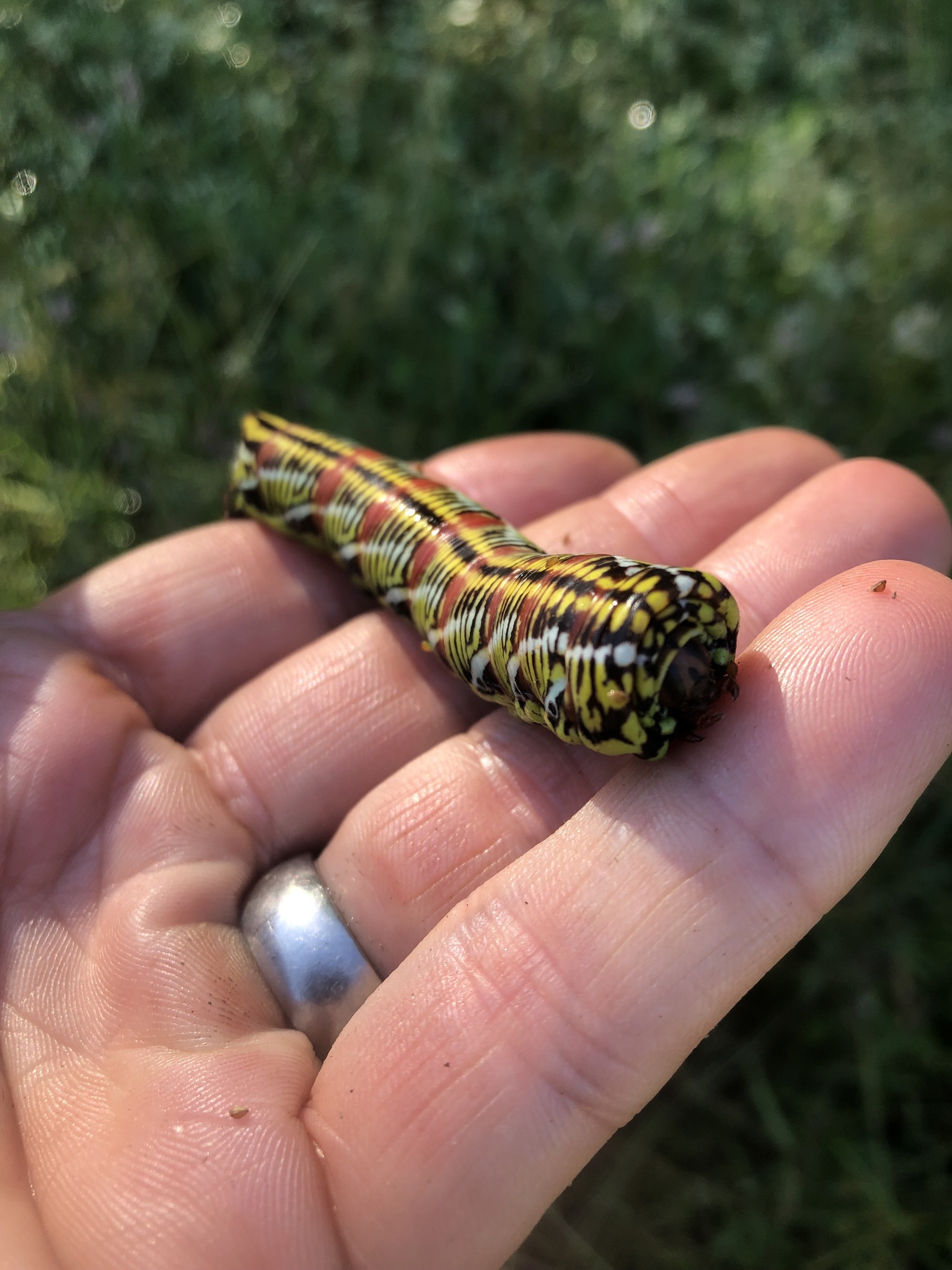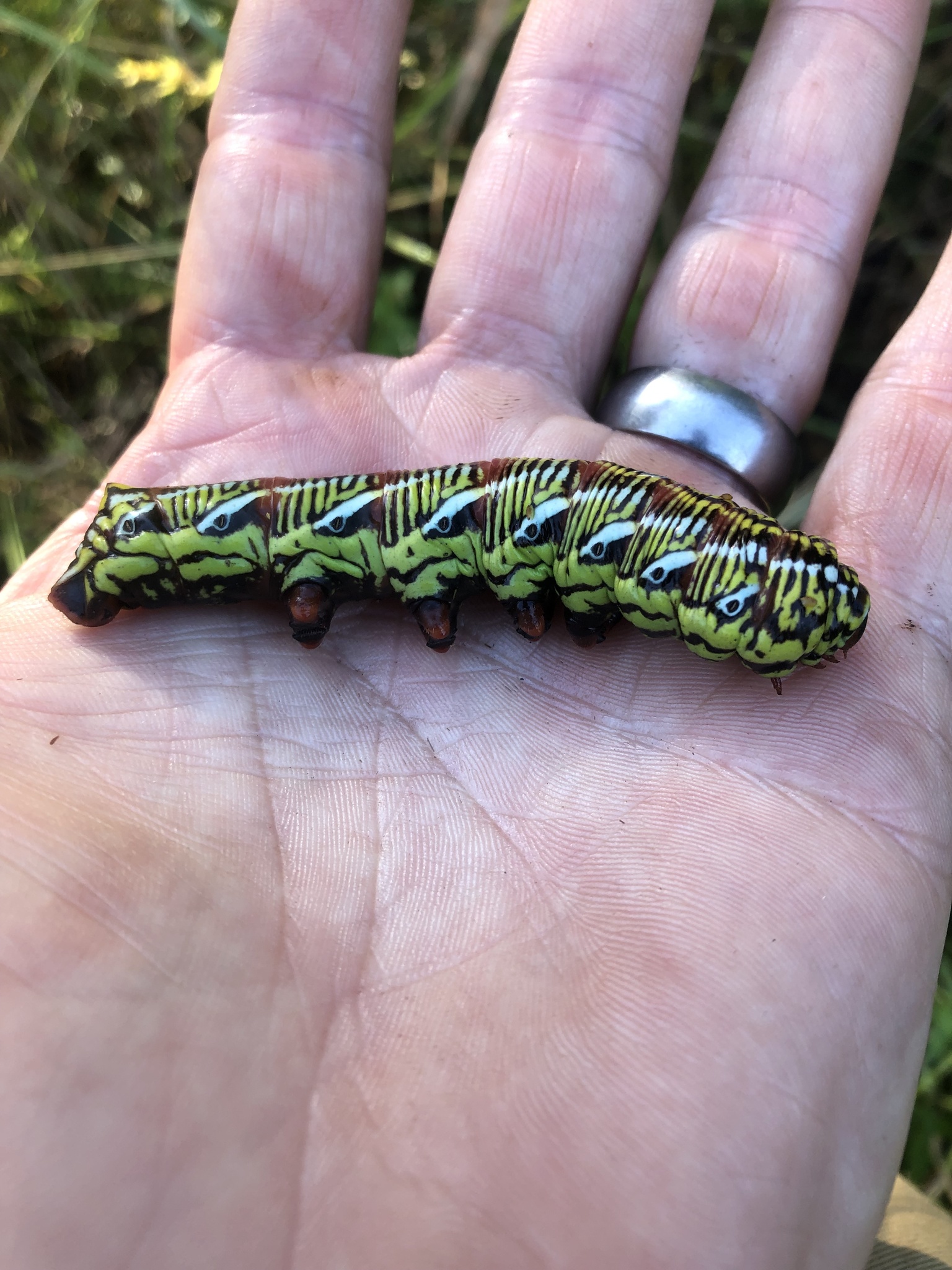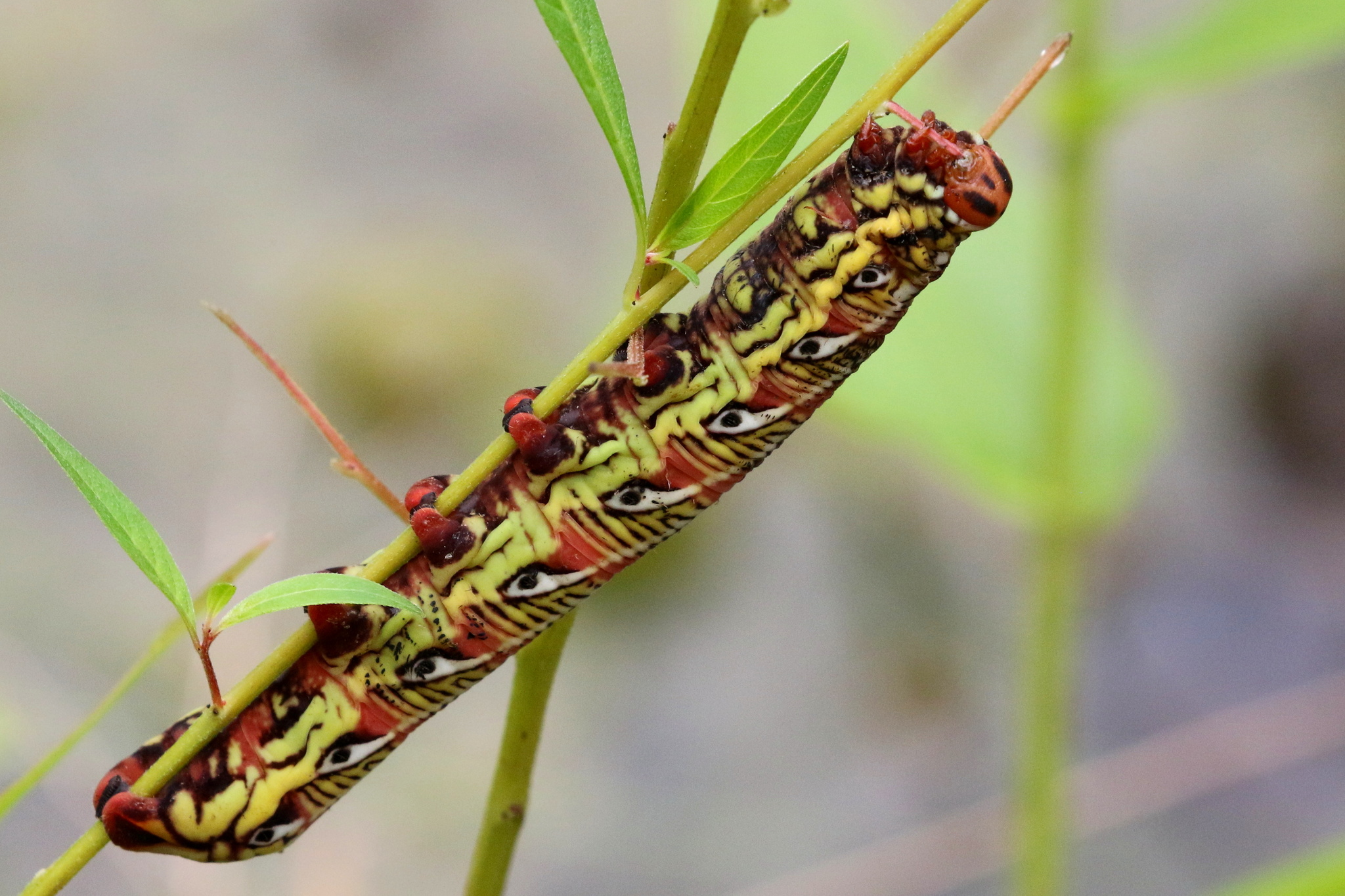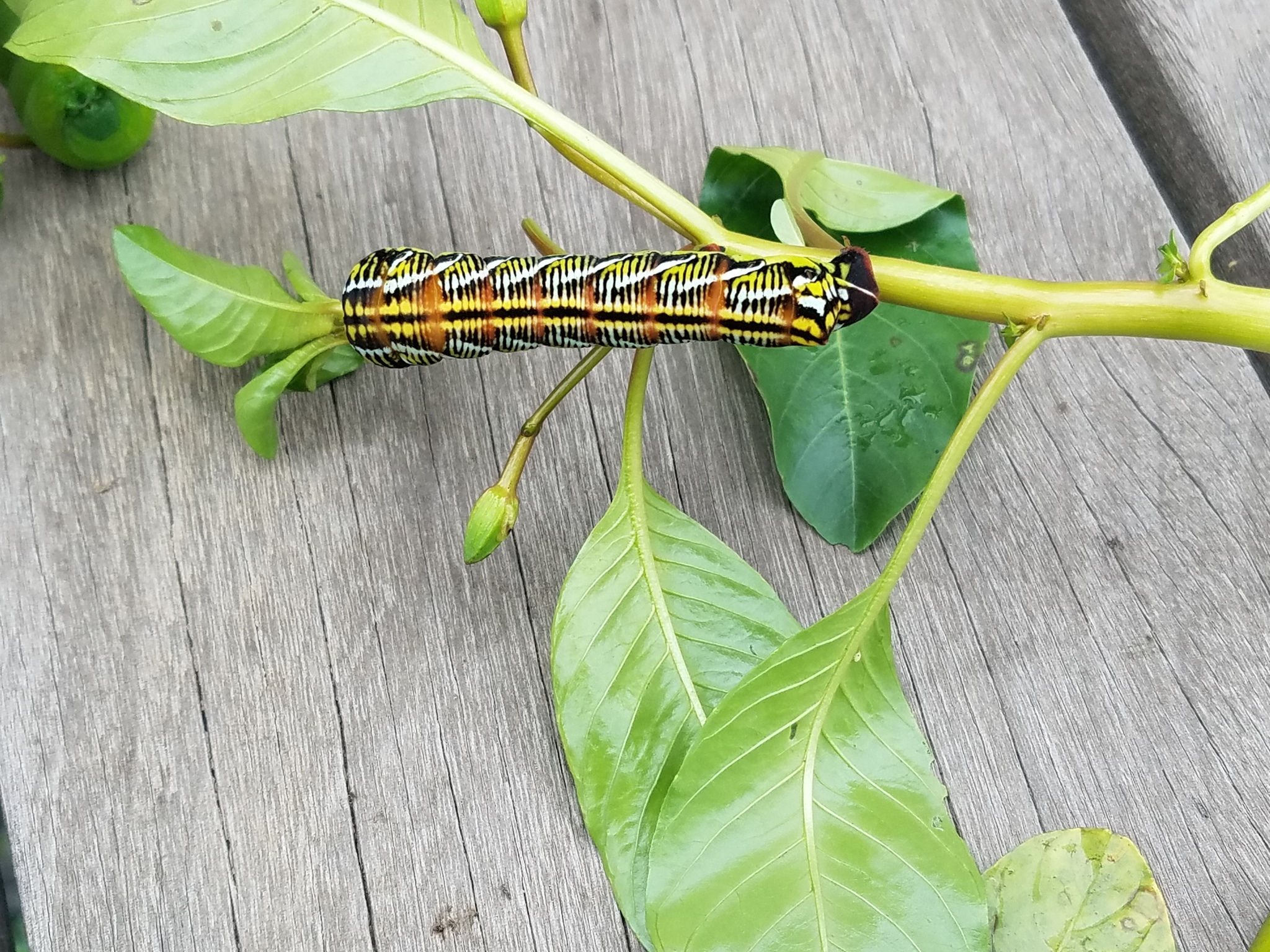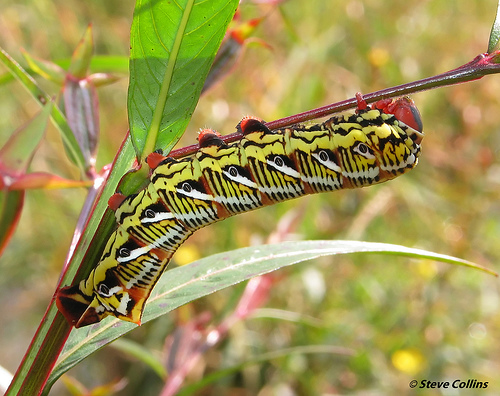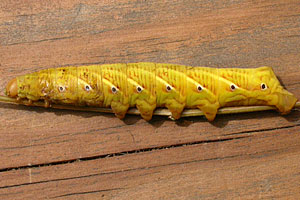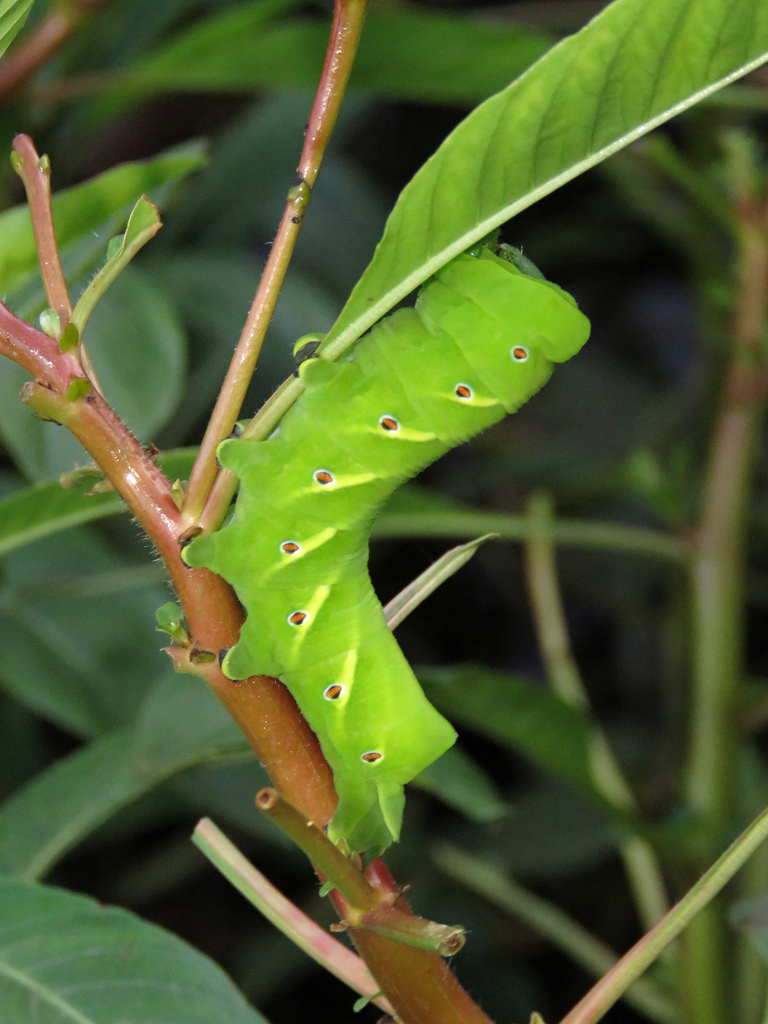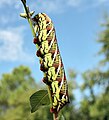Map Snapshot













33 Records
Relationships
In Maryland, mostly found on Ludwigia. In Harford County Banded Sphinx Moth caterpillars have been observed feeding on Floating Primrose-willow. Winged-leaved Primrose-willow has also been noted as a host in Baltimore County.
Seasonality Snapshot
Source: Wikipedia
| Banded sphinx moth | |
|---|---|

| |
| Scientific classification | |
| Domain: | Eukaryota |
| Kingdom: | Animalia |
| Phylum: | Arthropoda |
| Class: | Insecta |
| Order: | Lepidoptera |
| Family: | Sphingidae |
| Genus: | Eumorpha |
| Species: | E. fasciatus
|
| Binomial name | |
| Eumorpha fasciatus | |
| Synonyms | |
| |
Eumorpha fasciatus, the banded sphinx, is a moth of the family Sphingidae. The species was first described by Johann Heinrich Sulzer in 1776.
Distribution
[edit]It is found from northern Argentina, Bolivia, Paraguay, Uruguay, Brazil, Colombia, Ecuador and Peru, north through Central America (Mexico, Belize, Guatemala, Honduras, Nicaragua, Costa Rica and Panama) to southern California and southern Arizona, east to Texas, Oklahoma, Louisiana, Mississippi, Florida and South Carolina. Strays can be found north up to Missouri, Michigan, Indiana, Pennsylvania, New Jersey, New York and Nova Scotia. It is also found in the Caribbean.[2]
Description
[edit]-
Male dorsal view
-
Male ventral view
Biology
[edit]Adults are on wing year round in the tropics, but in the north, there are at least two generations with adults on wing from the end of May to July and the end of August to October in South Carolina and from May to October in Louisiana. Adults have been recorded feeding on nectar of Crinum, Catharanthus roseus, Petunia and Saponaria officinalis.
The larvae feed on Ludwigia (including L. decurrens, L. erecta, L. leptocarpa, L. octovalvis, L. peruviana and L. repens), Cissus verticillata, Fuchsia hybrida, Magnolia virginiana, Parthenocissus and Vitis species. The larvae are highly variable in patterning and depth of color. Pupation takes place in burrows.
Subspecies
[edit]- Eumorpha fasciatus fasciatus
- Eumorpha fasciatus tupaci (Kernbach, 1962) (Galápagos Islands)
Gallery
[edit]-
Larva
-
Larva, green variation
-
Larva, pink variation
-
Larva, black variation
-
Larva, red variation
-
Larva, multi-colored variation
-
Pre-pupation color change
-
Mid pupation
-
Freshly pupated
-
Pupa
-
Imago (adult moth) back view
-
Imago side view
-
Larva on Ludwigia peruviana
References
[edit]- ^ "CATE Creating a Taxonomic eScience - Sphingidae". Cate-sphingidae.org. Archived from the original on 2012-11-13. Retrieved 2011-10-26.
- ^ "Eumorpha fasciatus fasciatus". Sphingidae of the Americas. Archived from the original on 2015-05-23. Retrieved 2011-10-26.
External links
[edit]- Lotts, Kelly & Naberhaus, Thomas (2017). "Banded sphinx Eumorpha fasciatus (Sulzer, 1776)". Butterflies and Moths of North America. Retrieved December 10, 2018.
